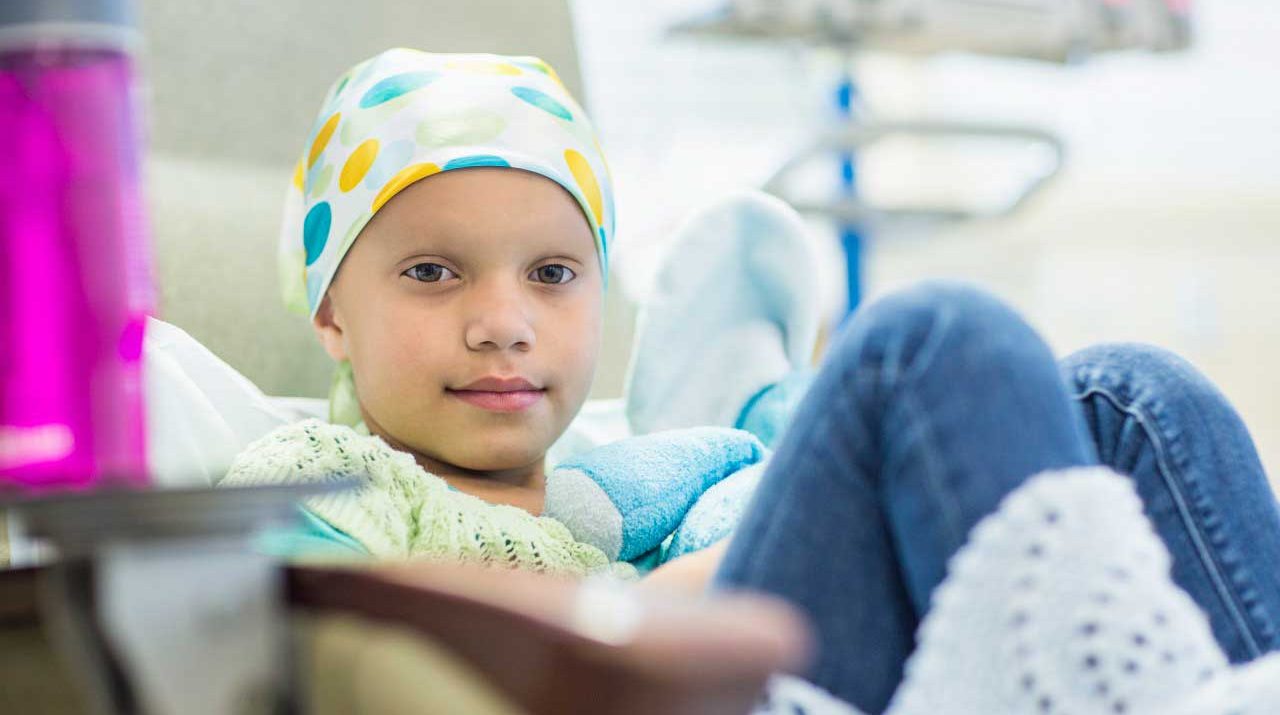Caring for a Child with Leukemia

When caring for a child with leukemia, you’ll need to explain procedures, keep her involved in distracting activities, and hide your fear or anger.
Children with leukemia and their parents often say that the treatment is as hard as the symptoms of the illness — and parents should monitor their children for signs that they might stop cooperating with the nurses. The last thing you want is for your child to have to be tied down to get a chemotherapy injection.
YOU MIGHT ALSO LIKE: Signs of Leukemia in Children
As a parent, you’ll need to explain procedures to your child, keep her involved in distracting activities while waiting, and hide your fear or anger. Keeping your child calm during the procedure is most important. Research suggests that children will cooperate if parents project confidence that they can handle all of the challenges the condition presents.
That’s a tough load, but you’re not alone and much help is available. About 16,000 children and teenagers are diagnosed with cancer each year. But many more survive because of advances in care. You may remember stories of kids with cancer who died when you were a child. Forty years ago, 40 percent of children diagnosed with cancer died within five years.
Now, fewer than 20 percent of children with cancer pass away. The numbers depend on the kind of cancer, of course. The deadliest is cancer of the blood and bone marrow, known as acute myeloid leukemia, which has a 65 percent 5-year survival rate. The child’s age at onset, the location and extent of the tumor, and the treatment all make a big difference, too.
The main treatment for childhood leukemia is chemotherapy. Your child will receive the drugs in cycles, with rest periods in between, over a year to three years. Chemo can cause hair loss, nausea and fatigue, and a tendency to bruise or bleed easily.
Children with more dangerous cases may also get a stem cell transplant and, in some cases, receive drugs, surgery, and radiation. Look for specialists in pediatric cancer. Make sure you understand the treatment and its side effects. Also be sure to tell your child’s doctors about any herbal remedies or other alternative treatments you’re considering or giving your child.
Look into palliative care, which manages symptoms. It is not the same as hospice care, which focuses on easing death. Palliative care is offered alongside care intended to cure and can make it possible for daily life to continue more smoothly. The organization Get Palliative Care provides a directory of hospitals with palliative care teams.
If you tend to become anxious or despairing, it is essential for your child’s welfare that you reach out for support early on. Most parents seem to feel less anxious after their child passes certain milestones and surprisingly few develop depression. Studies, however, indicate that it’s common for parents to develop symptoms of post-traumatic stress, a term most used to describe veterans who’ve returned from a war zone.
As a caregiver of a child with cancer, you may find yourself distracted during the day or at night by memories of:
- The moment you heard the diagnosis
- The moment your child entered the intensive care unit
- Trips to the emergency room
- The death of your child’s hospital roommate
You may feel agitated whenever you hear the word “cancer” and be obsessed with avoiding other cases of cancer in your family.
To ward off that ongoing reaction, consider seeing a counsellor and connecting with support groups, which you can find through a variety of organizations or referrals from your medical team.
Resources
- Childhood Leukemia Foundation offers lists of resources; ipods and laptops; wigs made of 100 percent human hair sewn into a cap; baskets of gifts; and a binder to keep track of information and store booklets and a pre-paid telephone card.
- The National CML Society serves families and patients with a rare form of leukemia, chronic myeloid leukemia, through peer-to-peer matching programs, referrals for services, a portal to reach experts online, and educational events and retreats.
General pediatric cancer resources
- The Jessie Rees Foundation delivers inspirational presents, including a sketch of your child.
- Alex’s Lemonade Stand Foundation raises money to support research; offers a travel fund to cover transportation, lodging, and meals to visit specific hospitals; connects parents; and provides education for siblings.
- American Childhood Cancer Organization supports research and provides online support for parents.
- CancerCare offers telephone counselling from oncology social workers; online support groups; one-hour online or telephone workshops with experts; and financial assistance for transportation, medications, home care, child care, or medical equipment.
- CureSearch for Children's Cancer provides information about tests and procedures, treatment options, medications, side effects, and other issues.
- Hopecam connects homebound children to their classmates via web cameras and laptops.
- Make-A-Wish America helps to give eligible children a wish come true.
- Melonhead Foundation provides financial assistance to children with cancer and their families who are seeking non-traditional medical care, such as acupuncture and massage.
- Pablove Foundation funds pediatric cancer research and offers photography classes to kids with cancer.
- Rally Foundation offers research grants, a 1-year $500 grant to cover treatment or other related costs, and personalized fundraising pages for athletic patients.
- Shining Stars Foundation offers kids with cancer fun activities in all-day or overnight events and week-long camps.
- Starlight Children’s Foundation provides an online social network for teens with life-threatening illnesses and their siblings, as well as in-hospital parties.
- The National Children’s Cancer Society offers online communities and grants for lodging, meals, transportation, health insurance, and medical expenses that insurance doesn’t cover.
Updated:
August 28, 2023